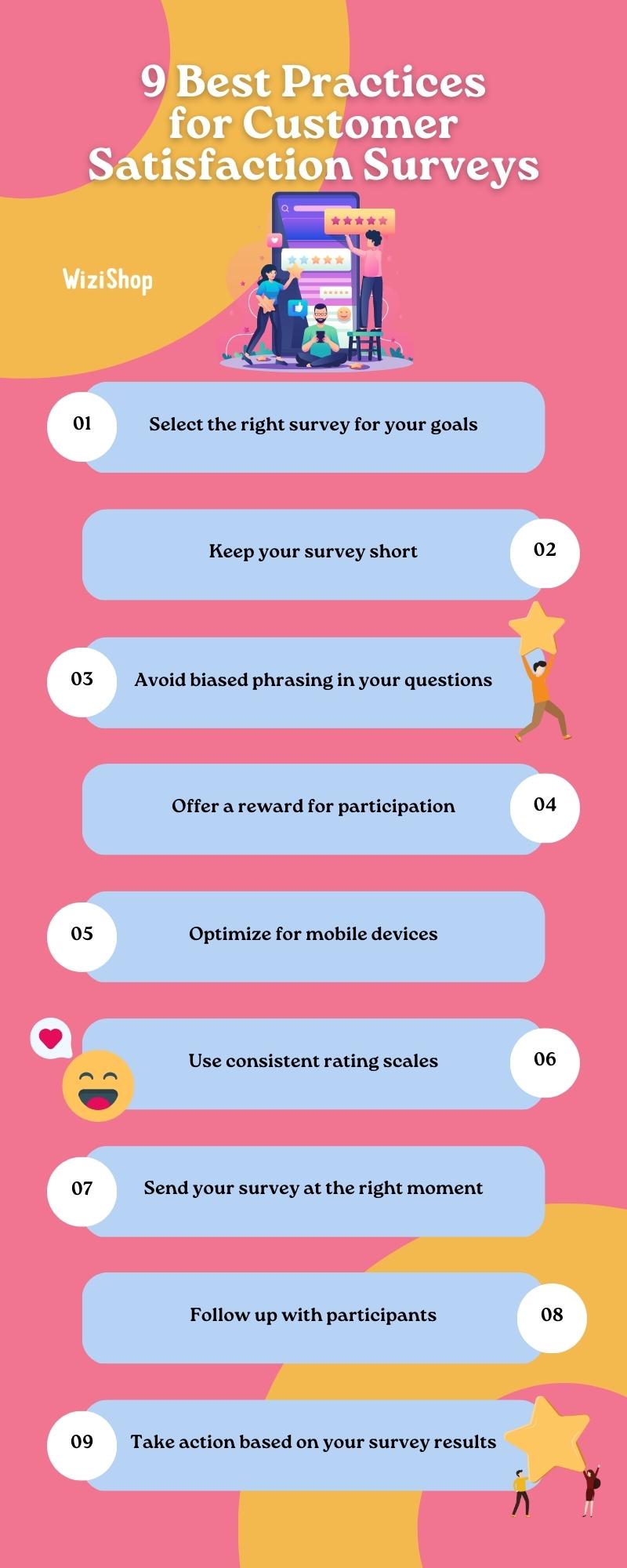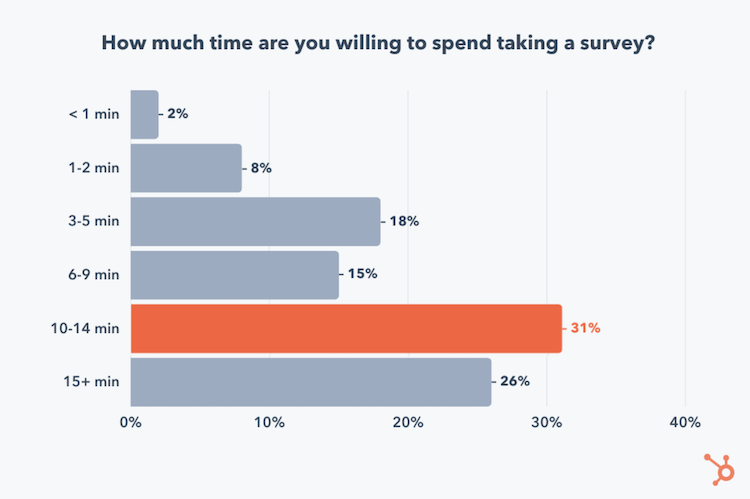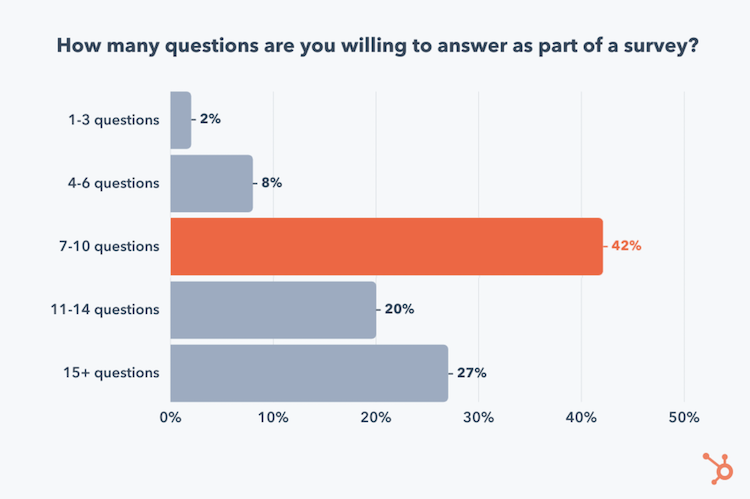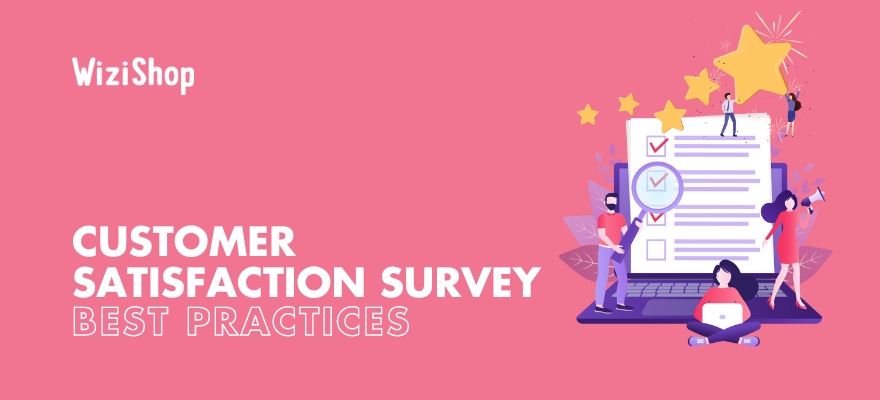Checking in with your customers to see how happy they are with your brand’s offerings via periodic polling can be very beneficial to improving and growing your business. However, this tactic will only provide you with helpful information when you craft effective surveys that include the right queries asked at the right moment.
In this article, we’ll explain everything you need to know about customer satisfaction surveys and the best practices to follow when creating and sending them to your own shoppers.
What is a customer satisfaction survey?
A customer satisfaction survey is a questionnaire that asks customers a series of questions to gauge how satisfied they were with a company’s product, service, or experience, e.g., a recent interaction with the customer service team. It can also be used to gauge customers’ level of happiness with a brand overall.
Customer satisfaction surveys make it possible for businesses to have a better understanding of shoppers and their needs as well as learn if they’re meeting their customers’ expectations. Furthermore, companies will often use the insights obtained from well-constructed surveys to improve their products and services and optimize the user experience they offer.
Benefits of customer satisfaction surveys
Today, unless you sell a super-niche item, there’s a very good chance that you’ll have at least a few competitors when it comes to attracting shoppers and earning sales. To give yourself the best chance of success in a competitive market, you can help your business stand out by offering a high-quality experience.
Actively seeking out customer feedback will allow you to better meet (and even exceed) the expectations of the people who purchase from you. Here are just a few of the benefits that customer satisfaction surveys can bring to your business.
Allow you to have a better understanding of your customers
There’s a good chance that you’ve already obtained a decent amount of data concerning your customers and their preferences via their interactions involving your customer service, previous orders, your own market research, etc. That being said, if you really want to know what people want, it’s best to go straight to the source and ask your customers directly.
Unless a shopper has had an extremely poor or a truly exceptional experience on your site, they’re unlikely to offer up their feedback without being asked. A well-constructed survey can help you to learn more about your buyers’ likes, dislikes, and expectations.
Demonstrate that you value your customers’ opinions
Consumers want to buy from companies that view them as more than just dollar signs. As discovered by a 2017 report by Microsoft, 77% of shoppers have a more positive perception of brands that proactively seek out and take customer feedback into consideration.
By going out of your way to request your customers’ thoughts on a particular topic relating to your business, you’ll show them that you care about what they have to say. This in turn will make them more likely to purchase from you in the future.
Learn how your business can improve
Customer satisfaction surveys allow you to know people’s opinions on everything from your products and customer service to your ecommerce site, packaging, shipping, and more. It’s possible that your customers may be really pleased with one aspect of your company but not so much with another. The answers from your respondents can help you to zero in on exactly how your business can improve in order to better meet your customers’ needs.
Surveys can also provide valuable insights into what consumers might like you to make available in the future. By inquiring about potential products and services your customers would be interested in, you can remove some of the guesswork when it comes to deciding what to offer your buyers.
Strengthen customer relationships and build loyalty
Even with extensive planning and the best of intentions, problems are bound to occur from time to time with any business. For many consumers, when it comes to deciding whether to make future purchases from companies with whom they’ve had a poor experience, what’s most important is how those companies respond to issues.
Reaching out to shoppers who’ve ordered from your website, interacted with your customer service, or tested a new product will help you to forge stronger relationships with them and build customer loyalty for the long term.
Furthermore, customer satisfaction surveys can help you find happy customers who can become brand advocates. When you discover shoppers who’ve had a positive experience with your brand, consider using this in your marketing strategy, e.g., offering incentives to respondents who refer new customers to your business.
Keep negative word of mouth to a minimum
If people have a bad experience with your business and are unhappy as a result, they won’t hesitate to tell others about it. What’s more, with the rise of social media, negative word-of-mouth advertising spreads much more quickly these days.
Reduce potential issues by being proactive about requesting feedback from your customers and then demonstrating your desire to solve any problems that arise. Remember that actions speak louder than words, so be sure to offer unsatisfied shoppers helpful solutions as soon as possible.
Types of questions in customer satisfaction surveys
Customer satisfaction surveys can feature a variety of types of questions, with each having an impact on the data you’ll receive. Here are some of the most common options you might consider when you start to design a survey for your shoppers.
Rating scale
One of the most popular kinds of questions used to measure customer satisfaction involves a rating scale of some sort, such as the Likert scale. With this type, you’ll ask a question or provide a statement, and you’ll give participants various response options, ranging from one extreme to another, also possibly including a neutral response.
Here’s an example of a statement and typical responses you might see in for a question using the Likert scale:
“This product meets my expectations.”
- Strongly disagree
- Disagree
- Neither agree nor disagree
- Agree
- Strongly agree
Rating scales are frequently used in customer satisfaction surveys for several reasons. They’re simple to understand, so your customers will likely be able to respond to them without any issue. These questions also make it possible to easily measure the response data and improve your aggregate score with time.
The main disadvantage of this strategy is that it doesn’t allow you to obtain deeper insights concerning the topic. Say that the majority of your respondents “strongly disagree” with the statement “This product meets my expectations.” Okay, so now you know that they aren’t happy with the item, but you don’t know why…
For this reason, it’s often a good idea to add open-ended questions to your survey when you use scales to get more detailed feedback along with a broader view.
Multiple choice
Multiple-choice questions provide respondents with at least three mutually exclusive answers from which to choose. For example, in your customer satisfaction survey, you could include a question asking about how the respondent’s age:
“What age group do you fall into?”
- 18–24
- 25–34
- 35–44
- 55–64
- 65+
The responses you receive would then allow you to compare the satisfaction levels of people in different age groups.
Similar to rating scales, multiple-choice questions are generally easy for people to answer and for a brand to analyze. However, too many of them in a single survey can quickly tire respondents out and possibly lead to inaccurate data. You should prioritize the inclusion of questions that truly support achieving whatever goals you hope to accomplish with the survey.
Binary
Binary questions provide two possible response choices per question. Often in a “Yes/No” format, this type of survey question allows for quick responses to queries such as the following:
- “Did you find what you were looking for?”
- “Was your problem resolved?”
- “Did our customer service meet your expectations?”
- “Are you satisfied with this product?”
- “Is this blog article helpful?”
This kind of question is perfect for when you just need a simple response to achieve your survey goal, such as if you want to find out if a specific page on your website is helpful to visitors in order to optimize the page’s content.
Again, however, you don’t get a ton of data to go on with binary questions. If your survey features a high number of these kinds of queries, it can bring on respondent fatigue and lead to people just picking the positive answer when it might not be the most accurate one.
Open ended
If you’re looking to obtain qualified insights from your survey, including open-ended questions is the way to go!
Open-ended questions place no limits on how people can respond, providing respondents with much more freedom to say what’s on their minds. Whether you have a high or a low score in a particular area, this type of question can help you to discover why your customers are satisfied or dissatisfied.
Here’s an example of a common open-ended question you’ll find on customer satisfaction surveys:
“Please tell us how we can improve.”
A few blank lines or an empty box would generally follow, giving the respondent ample space to write out their answer. Keep in mind that this type of question takes people more time to complete. To avoid overwhelming respondents, aim to keep the number of this kind of question in your survey to a minimum.
9 Best practices for customer satisfaction surveys
Ready for some practical tips you can use to create engaging surveys that’ll provide you with helpful data and results? Check out these 9 best practices to follow.

1. Select the right survey for your goals
Whenever you decide to create a survey to send to your customers, it’s essential to consider your goals. What kind of information are you hoping to obtain? Do you want quantitative or qualitative data? What do you plan to do with the feedback after you get it?
Once you understand your objectives, you can better determine what metrics and type of survey would best support your efforts to accomplish them.
- Net Promoter Score (NPS)
The NPS is a research metric that can assist you in establishing the general level of satisfaction your customers feel regarding your offerings. It usually involves a direct question, such as “How likely are you to recommend [company name] to others?” The NPS then asks participants to respond by picking a number from 1 to 10 or sometimes from 0 to 10.
- Customer satisfaction (CSAT) score
To learn how happy your customers are with a particular product or service you offer, you can avail of the metric known as the CSAT score. An example of a question you might use for this type of survey is “How satisfied are you with your experience today?” Then, users would generally choose a number from 1 to 5, with 1 being “Highly Unsatisfied” and 5 being “Highly Satisfied.”
- Customer effort score (CES)
With a questionnaire involving the CES metric, you can measure the level of difficulty a customer had with performing a specific action concerning your company, such as completing a purchase on your website, interacting with your customer support, or using your product. This type of survey might ask the user a question like “How easy was it for you to interact with our customer service team today?” and offer respondents various answers from which to choose, ranging from “Very Difficult” to “Very Easy.”
2. Keep your survey short
In order to source as much data as possible with your questionnaire, it’s essential to do what you can to minimize your abandonment rate, namely by keeping your survey length relatively short. It’s simple: unless you’ve provided a very enticing incentive (see Best Practice #4 on this list), most people are not going to stick around to complete a 45-minute survey.
Aim to be clear and concise in your questioning. Remove unneeded phrasing from your queries, with the objective of asking questions in the shortest way possible while still providing enough context so that participants can understand what you want to say.
According to a study by HubSpot, it appears that the time required to fill out surveys should ideally be under 15 minutes. The largest percentage of respondents, 31%, stated that they’d be willing to spend 10 to 14 minutes completing a survey.

Source: HubSpot
Besides prioritizing brevity for each question, you’ll also want to pay attention to the total number of questions you include in your survey. The HubSpot study also found that the maximum number of questions the majority of respondents stated they’d be willing to answer when completing a survey was 7 to 10.

Source: HubSpot
Focus on including only the queries that’ll assist you in achieving the goal(s) that you’ve set for the survey.
Note that people like knowing what to expect, so be upfront about the approximate time it’ll take to complete a questionnaire that you send them. They’ll be more apt to start and finish the survey if they have a good understanding of the time they’ll need to devote to it in advance.
3. Avoid biased phrasing in your questions
Using language that may lead a user to respond a certain way might be good for your ego, but it won’t necessarily get you the most helpful feedback. It’s therefore crucial to remain neutral when creating questions for your survey.
Here’s an example of a query featuring biased phrasing that you’d want to avoid:
“Our amazing new skin serum is more effective than ever. What do you think about it?”
A better, more neutral way to phrase this would be the following:
“What are your thoughts on our new skin serum?”
As the aim of any customer satisfaction survey you give to shoppers is to learn more about your customers and ultimately improve your offerings, obtaining accurate data is key. Stay away from biased phrasing and leading questions to ensure that you get the best results.
4. Offer a reward for participation
When you send a survey to your customers, be it via email or as a pop-up that appears on your site, it’s important to remember that their time is valuable. It’s quite possible that they may need a bit of an incentive to respond. To obtain as much feedback as possible, consider offering a reward to those who participate.
Account credits, discounts, or even a small free gift are all great ways to encourage people to complete your questionnaire and allow you to analyze a greater amount of data. That being said, depending on how often you send surveys to your audience, this can get pretty costly for your brand.
To avoid going broke from survey incentives, you might, for example, only offer a reward for an especially long survey. You could also prioritize things like account credits, small discounts, and free trials over big discounts and free gifts for a more budget-friendly strategy.
5. Optimize for mobile devices
When it comes to survey design, it’s not just about the number and length of the questions you include. You’ll also need to be sure that your questionnaire appears correctly to all users, regardless of the device they use to view it.
With mobile use becoming increasingly popular across the globe, it’s not surprising that a growing number of people are responding to surveys via a mobile device or in a mobile app. If your questionnaire isn’t optimized for this kind of viewing and is too difficult for mobile participants to navigate, your response rate is likely to fall.
By ensuring that your surveys feature a mobile-optimized design, you’ll boost your chances of getting more consumers to participate, providing you with a larger amount of information to analyze. The added convenience of being able to answer questions with their mobile devices gives users more opportunities to check out your survey on the go.
6. Use consistent rating scales
As you’ll have likely noticed in your own survey-taking experiences, rating scales are frequently present in questionnaires involving customer satisfaction. Rating scales are generally very easy for users to understand and respond to, but they can quickly get confusing if their setup changes within the same survey.
For instance, say that early on in a survey you respond to several queries asking how often you use certain features on a website. You’re asked to select a number on a scale from 1 to 5, where 1 is “Never” and 5 is “Always.”
As you get further into the survey, you’re asked how you feel about a statement and are told to select a number on the scale. Now, though, 1 is “Strongly Agree” and 5 is “Strongly Disagree.” Because the “positive” and “negative” extremes are now on opposite ends of the spectrum, you might need to reread the question a few times to ensure that you answer correctly, making the process more burdensome for you as the respondent.
What’s more, when this occurs in a survey, many participants may just skip over the question if it’s too confusing or provide an inaccurate response by mistake. To prevent this issue, be sure that any rating scales you include in a survey are consistent.
7. Send your survey at the right moment
To collect the largest amount of data possible with your surveys, you’ll need to be sure to consider the timing of your sendings. According to a study done by Survey Monkey, the day of the week that has the highest survey response rate is Monday (10% higher than average), with Friday tending to bring in the lowest number of responses (13% lower than average). This makes sense, as many consumers are likely to be less fatigued by their inboxes and slew of emails at the beginning of the week rather than at the end.
However, don’t just take the day of the week alone into consideration when determining when to request feedback from users. You’ll also want to think about where potential participants are in the customer journey with your store as well as your reason for sending the survey, your products and/or services, how many people you’ll send the survey to, and how often and how long you interact with your customers.
For example, a great time to request feedback from a user about a product you sell is a little while after the item has been delivered. Depending on the nature of the item, it’s generally a good idea to wait somewhere between 3 and 7 days to send users your questionnaire, as this gives them enough time to test the product out, and their experience is still going to be fresh in their minds.
In contrast, for a survey pertaining to a specific interaction, say with your customer service team, the ideal window for sendings shrinks considerably. Aim to ask for users’ thoughts within 24 hours so that respondents don’t have to try to remember what their experience was like, allowing for more honest, thorough feedback.
8. Follow up with participants
When you get the results back from a survey you’ve sent out to your audience, you’ll likely be in a hurry to compile the data and see what valuable insights you can learn. Don’t forget about your respondents, though!
If people take the time to complete your questionnaire, it’s a good idea to acknowledge their efforts and say thank you. This helps them feel appreciated (great for building brand loyalty) and makes them more apt to want to participate in any future surveys you may send. Follow up with participants by sending a personalized message as soon as possible after you’ve received their feedback.
Reviewing your survey results in a timely manner is advantageous, especially when it comes to negative feedback. This allows you to address any issues a user may have had and offer possible solutions to help keep them as a customer.
9. Take action based on your survey results
Yes, it’s important to measure customer satisfaction and discover what users think about your brand and its offerings, but what’s even more crucial is what you do with that information. After all, being able to make better decisions and take action to improve your business is why you opted to collect the data in the first place!
The steps you take after analyzing your results will depend on your company, the specific situation you want to address, and your financial resources. Nevertheless, it’s beneficial to have a strategy in place for what you plan to do with the information you receive.
Say that you’ve created a questionnaire asking people their thoughts on how easy it is to navigate your website. If you discover that they, for example, find it difficult to locate specific products or that they think your site loads too slowly, what will you do to remedy these issues?
Taking solid steps to improve your products, services, and the ecommerce customer experience you offer soon after you get the results of your survey demonstrates to your customers that you value their opinions. This in turn can aid in strengthening brand loyalty and make shoppers more willing to participate in future questionnaires you send.
Request customer feedback on a regular basis
Carefully designed customer satisfaction surveys are an excellent way to obtain helpful data involving your current and potential customers alike. Using the valuable insights you get from customer feedback, you can make business changes that’ll allow you to strengthen brand loyalty, improve the customer experience, and ensure that your products and services meet your target market’s expectations.
However, it’s not enough to send your customers surveys once in a blue moon. To better observe patterns and trends and see how customer satisfaction has improved over time with your business, you’ll need to request feedback from shoppers on a regular basis.
Apply the best practices described in this article when designing your customer satisfaction surveys to ensure that you get the best results possible. With the feedback you receive and a willingness to adapt as needed to suit the ever-changing needs and preferences of shoppers, you can help your business grow and succeed for years to come!










